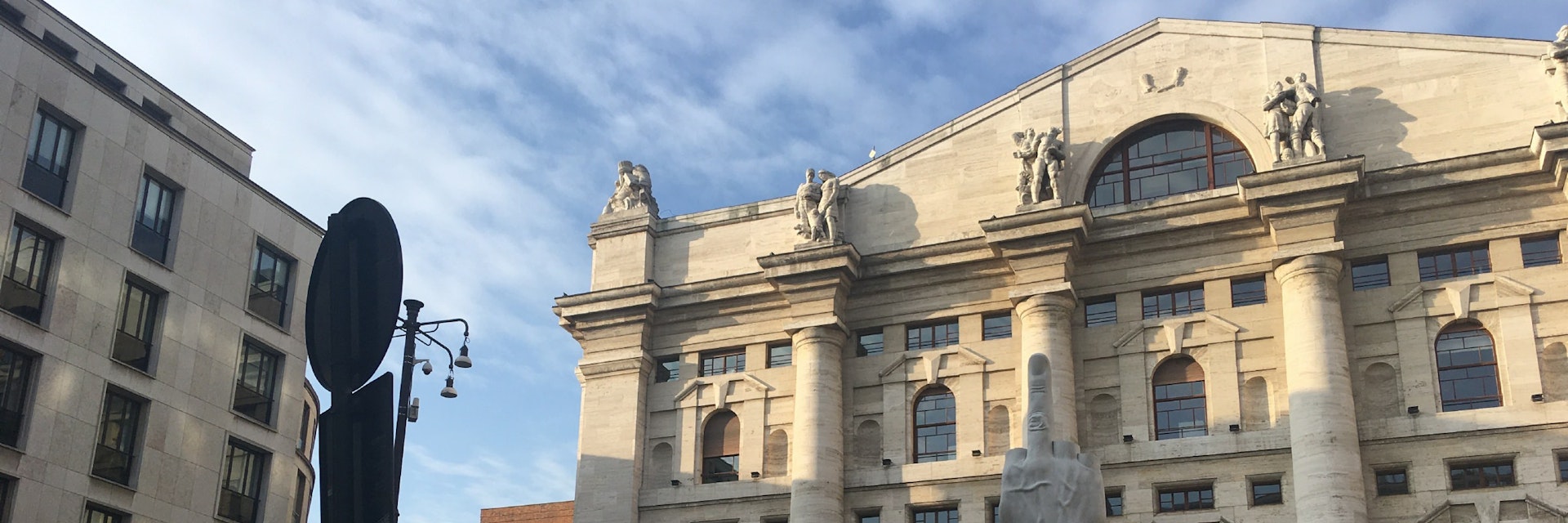Home to the Italian stock exchange (Palazzo della Borsa), this square is a famous hub of financial activity. But that’s not all it’s known for. In the centre of the piazza is Milan's most controversial public sculpture, Maurizio Cattelan’s L.O.V.E. (standing for 'Liberty, Hatred, Vendetta and Eternity'). A four-metre-high fist with a raised middle finger, many believe it’s a statement on the economic crisis as it was erected just after the financial crash, although the artist has refrained from commenting.
Still, its message may be even more subversive, as commentators have noted the finger points away from the Borsa and towards the city.








